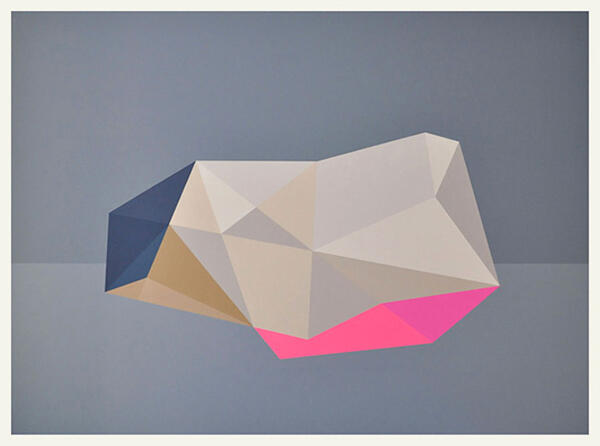Radical Optimism, 2
Josée Bienvenu, New York
Like the first exhibition bearing the same title, which we could visit in 2010 and with which this show shares a contradictorily paradoxical spirit, the present exhibit opens with a series of graffiti leading to the gallery entrance. As in the previous show, we are overcome by a feeling of being in the presence of something that is not consistent − the words optimism and radical do not seem to work very well together.

Once in the gallery, things continue to be unclear; there is something patent that does not seem to materialize. A series of apparently formalist, geometric and serenely abstract works emanate certain political and social commitment. They are all imbued with a meditative quality. This includes Eight ways for dividing in half (2011), a series of eight compositions done with motor oil on paper by the Guatemalan artist Darío Escobar; a painting by Alejandro Corujeira that references the geometric abstraction tradition; the papers on which Fidel Sclavo seems to re-invent an abstract alphabet by means of small interventions; or the exceptional painting by Benjamin Appel, Möbel und Schranken (2011). The German artist, the only non-Latin American together with Philomene Pirecki, seems to be committed to the fragile and the non-spectacular. Through the use of materials more akin to sculpture, his geometric abstract compositions built on layers of color reveal a content that goes beyond that which is shown. Similarly, both Pirecki’s paintings and her photographic compositions − which take on the character of installations in the gallery − resort to small gestures to modify temporal and spatial coordinates, questioning the notion of a representation that may be considered definitive. In this way, she appears to paint and re-paint her pictures, or use old works to configure new ones − as is the case of Equivalence (Zinc) (2011), where the photograph of a metal sheet is confronted with an actual sheet placed above a work which was discarded in the past.
But perhaps the social commitment involved in the proposal becomes more evident − although not in a less delicate way − in the magnificent drawings by Johanna Calle or in the painting of Ricardo Alcaide. The works produced by Calle, who has been focusing on drawing for over a decade, seem to allude, through the use of wire, graphite and ink in subtle balance, to social, urban, linguistic and housing structures. Alcaide too, concerned as he is with the relation between the Latin American modernist movement and local architecture worldwide, moves between the poetic and the political. In Hide nº 45 (2011), belonging to a series in which he inquires into the notion of refuge, he bases his work on temporary structures built by the homeless, generating an enigmatic, multifaceted image that seems to float between what is real and what is feasible.
Lastly, Marco Rountree’s folded books and Miguel Mitlag’s ironic photographs refer the viewer to the subtle humor of the first part of the exhibition. In The Black Pill, Sr. (2010) or in Minilab (2010), where conventional yet abstract elements are methodically arranged against backgrounds in vibrant colors and frozen by the photographic shot, Mitlag constructs a narrative that seems to escape and belong to another moment in history − blurring the boundaries between science and fiction.
-
 2011, Hide n° 45, Acrylic on canvas, 51 x 67 in./Acrílico sobre tela, 129,5 x 170 cm.
2011, Hide n° 45, Acrylic on canvas, 51 x 67 in./Acrílico sobre tela, 129,5 x 170 cm.




